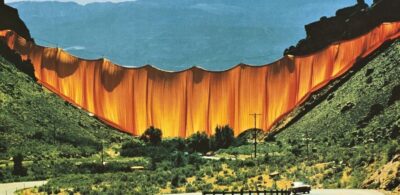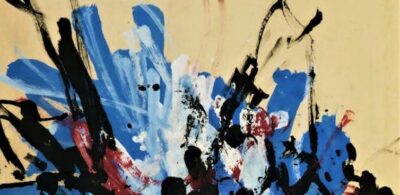Venice Really Is Sinking, Isn’t It?
Francois Pinault is the billionaire who owns the Gucci fashion group, Yves St Laurent, the Chateau Latour vineyard and the auction house, Christie’s. He is the 74th richest man in the world, and it’s only fitting that a business oligarch be allowed to help shape the face of contemporary art, after all, culture is just another commodity in today’s monopolized, globalized market, no?
Pinault is one of the elite art world’s gatekeepers, shaping and molding contemporary art through acquisition; he bestows fame and legitimacy to contemporary artists by adding their works to his enormous collection of postmodern art, and his new museum in Venice, Italy just opened to the public on April 30th, 2006.
The Palazzo Grassi on the Grand Canal, an 18th Century palace the magnate purchased from the city of Venice, will now house some of Pinault’s never before seen collection of 2,500 artworks. The billionaire transformed the building into a citadel for the conceptual, and indeed the palace has literally taken on those trappings. Its beautiful neo-classical waterfront façade has been wrapped in a skin of entwined luminous turquoise cords from the roof of the edifice to the waterline below. Created by Olafur Eliasson, the covering is meant to evoke “the motifs of the oriental carpets that once hung from the balconies of the noble palazzi lining Venice’s watery main thoroughfare.”
The Grassi’s first exhibit, Where are we going? would appear to have taken its name from the famous painting by Paul Gauguin that was painted in 1897-98, D’ou venons nous? Que sommes nous? D’ou allons nous? (Where do we come from? What are we? Where are we going?). But think again, the exhibition almost exclusively focuses on everything but painting.
It was named after a work on display by postmodernist art huckster extraordinaire, Damian Hirst, Where Are We Going? Where Do We Come From? Is There a Reason? Hirst’s installation displays the collected skeletons of birds, reptiles, amphibians, mammals, a few impossible hybrids, a human skull and a tiny fetus in a jar. Lucky art lovers will also be able to view two of Hirst’s sliced cows preserved in formaldehyde – now I ask you, why on earth would you want to travel to Venice to see Titians and Tintorettos when you could see a sliced and pickled cow at the Grassi?
Guardian art critic Jonathan Jones reports that Hirst is now worth £100m (that’s around $180,288,800 Yankee dollars.) Jones poses the question, Do rich artists make bad art?, and he answers with the sad lament: “What would Van Gogh have done if you offered him Hirst’s money as he stood there in the cornfield, pistol cocked? I think he would have pulled the trigger that bit more firmly.”
But the Grassi circus doesn’t end with Damien Hirst, you can also see disquieting photos of mannequin genitalia taken by Cindy Sherman, an entire room of minimalist scrawls by Raymond Pettibone, and Balloon Dog Magenta by Jeff Koons – a sculpture that would look more at home in a flower shop. Then of course there’s Carl Andre’s 37th Piece of Work, which is nothing more than a courtyard covered with 1,296 differently colored metal plates (let’s hope there’s not a 38th piece of work.) But the piece de resistance would have to be Maurizio Cattelan’s schoolboy-sized statue of Adolf Hitler, a quite realistic sculpture made of resin, wax, and human hair titled, Him.
Yes, Venice really is sinking isn’t it?
Since Mr. Pinault fancies himself a contemporary Maecenas or Medici, it was only proper for him to be surrounded by fellow barons during the gala celebration that marked the opening of the Grassi. Members of the billionaire class in attendance that evening included Benetton fashion empire board member Alessandro Benetton, heir of the FIAT empire John Philip Elkann, and Ferrari president Luca di Montezamolo, amongst others.
Aside from screaming, I wouldn’t know how to behave in such a social situation, and I’d more than likely be seized by an urge to break things… which could be perilous in a room filled with dead bovines suspended in large vats of formaldehyde.
Having traveled the canals and narrow streets of Venice and poured over the city’s priceless art treasures encountered in its many glorious museums, I’m more than a little familiar with the well deserved reputation the place has as a center of the Renaissance arts. Call me a philistine, but I’m not ready to forsake the art of the Renaissance in favor of the money-spinning trend mongers and their stables of fashionable postmodern artists.
I’d rather gaze upon a single painting by Andrea Mantegna then view the Grassi’s entire collection of minimalist chicken scratchings.
Like seeing the oil slicks deposited on the Grand Canal by the city’s heavily motorized boat traffic, I can’t help but feel Venice has been contaminated by the presence of Pinault’s collection. There are reports many Venetians have been baffled by what they’ve seen at the Grassi, but their consternation is dismissed by a chorus of media determined to sing the praises of the benevolent billionaire and art king maker, Francois Pinault.
I am here, merely to say… the Emperor has no clothes.




